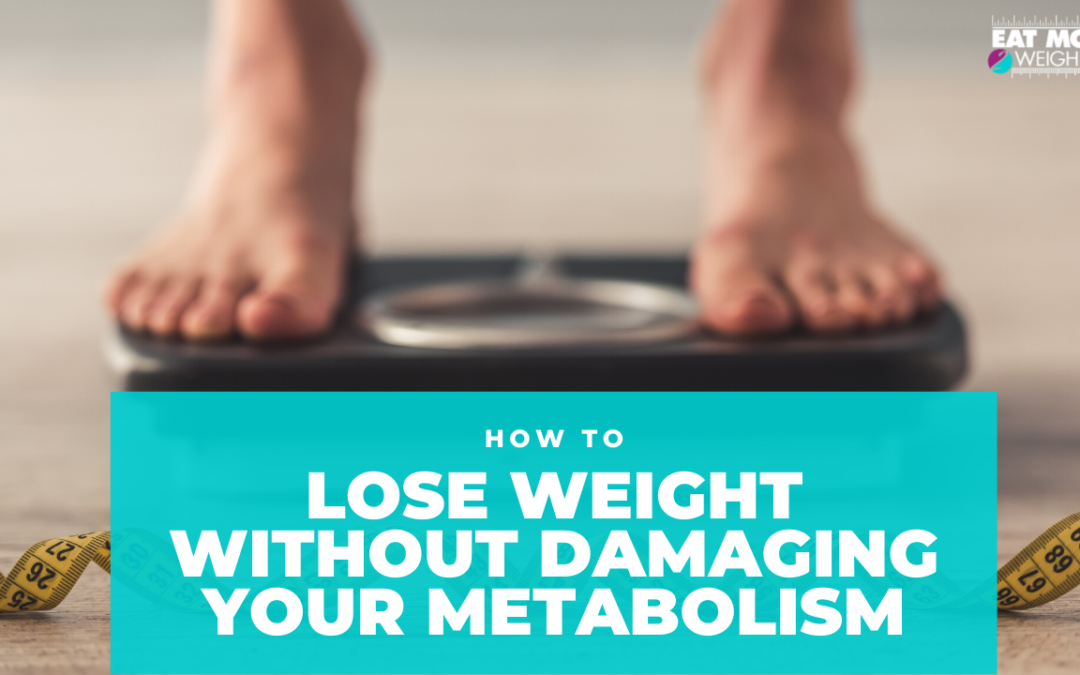

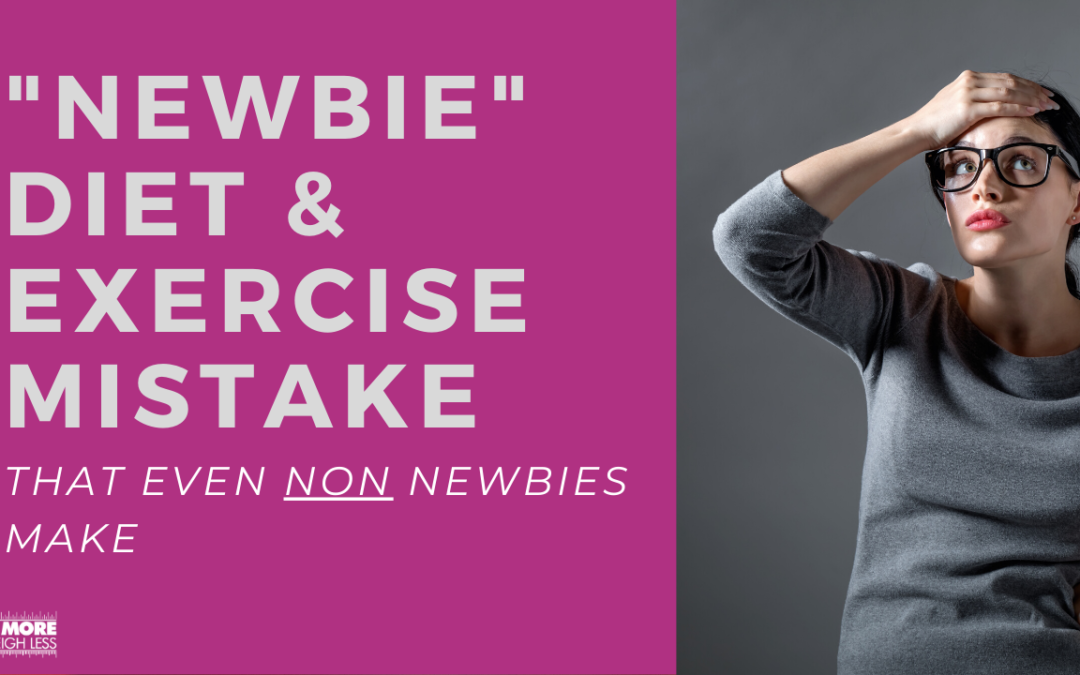
Newbie Diet and Exercise Mistake
Should I add more cardio?
Take a special supplement?
Maybe I’m fill-in-the-blank intolerant?
Fill-in-the-blank always worked in the past…I just need to stick with it…
The DIY Dieter’s Downfall – Allowing nostalgia to override the science

Wrong.
Unfortunately, there is no magic diet pill, calorie level, or workout plan that will help you achieve permanent success. At least not in the way that most people believe.
The diet industry has sold discouraged DIY dieters on the dream that if you just keep searching for that one, perfect-for-you style of eating or exercising, that you can “set it and forget it.”
Plateau Reality #1: The human body will adapt to ANYTHING that you do repeatedly.
Remember that first time you took up running/did that infomercial workout/cut carbs/tried Slim-fast? Whatever the thing is that gave you that first real taste of results? You got so focused on the results, that your brain made an immediate, long-standing (and incorrect) connection:
This is what it takes to get me results.
So, you either stopped doing it once you got to your goal, and pledged your undying devotion to it as your go-to from that moment forward…
Or…
You kept doing it religiously, thinking that the results could only get better from there.
But things didn’t quite pan out as you’d hoped. Eventually the results stopped, or started going backwards.
Results viewed out of context can lead to an extremely messy situation for DIY dieters. Years are wasted chasing the onestyle of eating, the one calorie level, or the one workout plan that will solve all of their problems. If only that’s how it all worked…

Plateau Reality #2 – If you want something to keep working, take a break from it.
Ok. So how the heck are you supposed to navigate this new reality that no matter what you do, your body will adapt and it will stop working?
Short answer: quit while you’re ahead.
Longer answer: know and accept the fact that anything works short term, but nothing works forever. Then you can strategically step away from something when (or preferably just before) it stops working.
Do you have to let it go forever? No. But don’t let your addiction to the short term “benefits” override the science: once your body has adapted, diminishing returns are on the horizon.
If you have a favorite workout plan, style, etc. you can still do them. But decide upfront if you’re doing it for the love of it, or because you want a physique-based result from it.
If it’s the former, then do what you love, as much as you like, for as long as you like. #noregrets
If it’s the latter, you’ll want to set yourself some boundaries. Decide ahead of time on the season, phase, or circumstances that you’ll be adding it in (ex: you love running in the summer time, or Thursday night Zumba with the girls).
But most importantly – set a designated time frame for when you will start, stop, and take a break from it so that you don’t experience diminishing returns on all your hard work. (For example: 3-6 weeks, or only ONE round of a 12-week plan, etc).
You can either choose to accept this, and plan accordingly.
Or…
…stay in denial and keep trying to find the one solution to ride off in to the sunset.
The choice has always been yours, and I’m not here to judge.
Just to help you make an educated decision that you can unapologetically own.
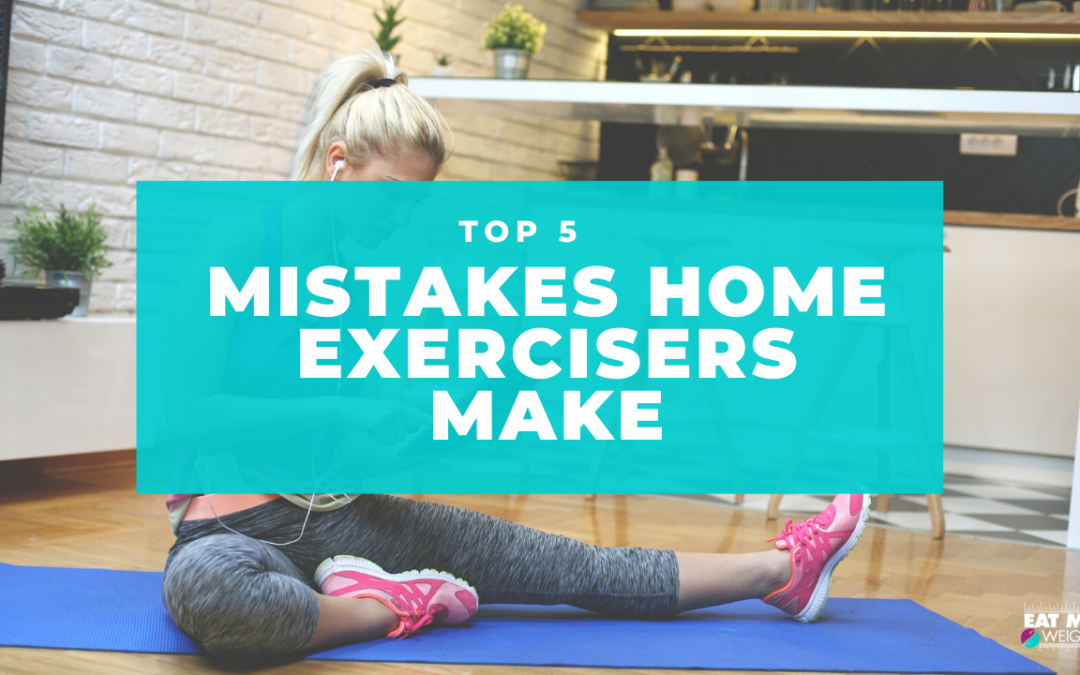
5 ways to take home workouts to the next level
**How to avoid the biggest mistakes that most home exercisers make**
I’ve always been an advocate for having a home gym setup in case of emergencies. But for some people, working out at home is the reason why they DON’T see the progress they want.
With more of us working out at home than ever before, there are even MORE options for the home exerciser than everrrrr before. Nearly every gym is offering “on-demand” options online, and every fit pro on IG is providing “quick and easy” moves you can do with little to no equipment from home.
IF you’re working out at home for only a week or two, then feel free to take FULL advantage of testing any and every idea or option available right now. Use this time for getting in YOUR movement any way that you can, and discovering styles of exercising that you didn’t know even existed to see if you find something you like. Give yourself the gift of variety at some point of your journey, it can be just the thing you need during high stress periods, or for a quick break from your usual (more strategic, less variety) workout plans.
However, physique adaptations can happen in as little as 3 weeks, so plan accordingly. Rest weeks and planned downtime can be an amazing gift if you’ve been running yourself into the ground – OR – it can be the nail in the coffin of your goals.
IF you will likely be working out from home for LONGER than 2-3 weeks, have a back up plan.
To make the best of your at home workouts, and assure you get continual, compounding results even during the quarantine, avoid these 5 mistakes most home exercisers make:
1) Not taking your workouts seriously. Just because you’re home, doesn’t mean you get to slack off/do laundry between sets (ok…so I’m talking to myself on that one! 🤣)
2) Being Random. Workout with a purpose. Once you’re out of the newbie phase, random Pinterest/homemade, etc. workouts won’t have the same effect that they used to.
3) Not progressing. When a workout gets easy, or you can lift heavier, etc…do it! Just because you sweat or can still “feel the burn” doesn’t mean it’s “working” in the way you think. The only way to keep seeing changes is to make an effort to progress in your workouts.
4) Not changing it up. Doing the same exercises/workouts/videos is not going to have the same results in Month 6 that it had in month 1. Don’t be afraid to move on (even if it’s just for a little while) when the workout is no longer serving you (or… if you can quote the video word for word.)
5) Not giving yourself room to grow. Make it a point to purchase heavier weights, incorporate new videos, or other equipment that allows you to make the exercise harder over time. Don’t stifle yourself by refusing to equip yourself for the next level.
Remember, if it doesn’t challenge you, it doesn’t change you!
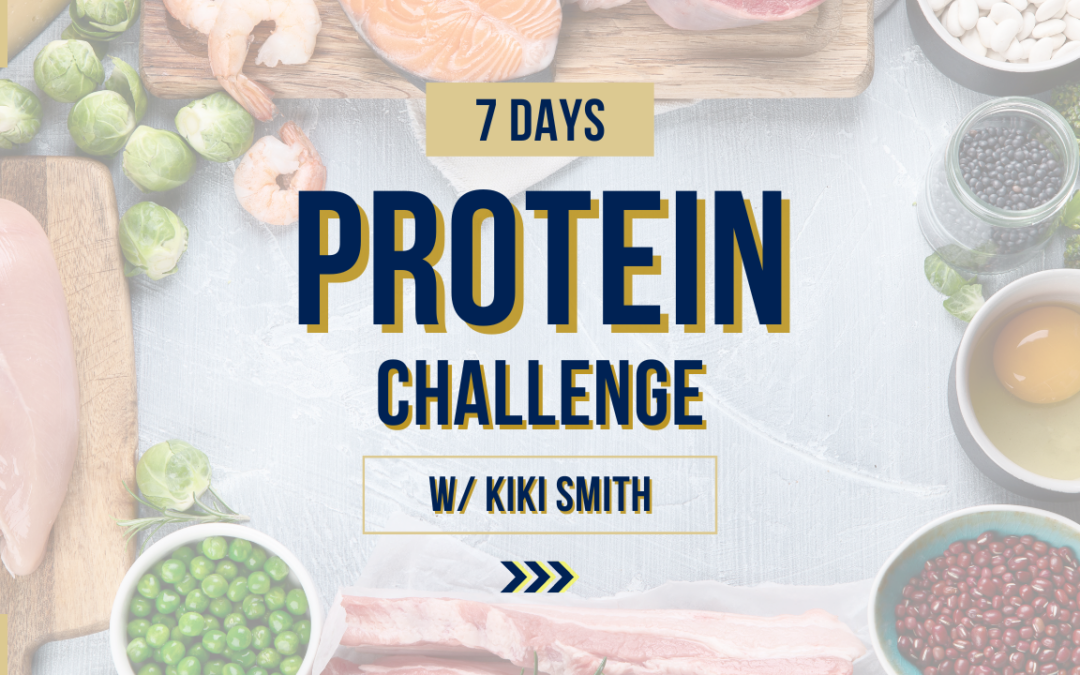
Do you eat enough protein? {7-Day Protein Challenge}
Ok. It’s officially time to stop avoiding this one. Yeah…I’m talking to YOU.
You’ve tried just counting calories. It didn’t work for long. Now you’re stuck. You have taken your stab at high carb, low carb, paleo, weight watchers, intermittent fasting, clean eating, more cardio, less cardio, more lifting, no lifting…and that was just last month. You have probably tried EVERY trick in the book, but progress is a no-go.
How do I know? Because I am you. Not being the biggest protein fan, I’ve struggled most of my fit-seeking life trying to find any way of eating that would get me results…without having to establish the one habit I needed most: eating enough protein.
Why Protein?
Protein tends to be one of the often ignored elements – the one that most of us have heard about, but keep downplaying. Protein is the cornerstone to the most successful diets, and is one of the most agreed upon proponents of fat loss, muscle gain AND a healthy metabolism. It’s a total no brainer, yet many of us totally dismiss its importance – in our constant pursuit of shiny (and quick!).
 Those of us who have accepted it, still shrug off the concept thinking that we probably eat “enough” protein already. Maybe. Maybe not. I fooled myself for years thinking that I was eating enough for my goals…even though hitting 100g on a good day was tough for me. I thought that having some protein at every meal was sufficient. As I hit the research a bit harder, I discovered that despite all that I’d accomplished, I wasn’t even coming close. Finally accepting, and attempting to truly step up my game has been a game changer.
Those of us who have accepted it, still shrug off the concept thinking that we probably eat “enough” protein already. Maybe. Maybe not. I fooled myself for years thinking that I was eating enough for my goals…even though hitting 100g on a good day was tough for me. I thought that having some protein at every meal was sufficient. As I hit the research a bit harder, I discovered that despite all that I’d accomplished, I wasn’t even coming close. Finally accepting, and attempting to truly step up my game has been a game changer.
My clients now know that before tackling ANY other area (including lowering cals), they must exhibit the ability to hit their protein goals consistently. I tell them plainly, that if they can’t hit the protein goal eating at maintenance, there’s no way they’ll be able to eat enough with even less calories. Since protein needs increase as calories decrease, skipping this step is devastating to progress.
The 7-Day Protein CHALLENGE
I learned a few tricks along the way, that can help ANY carb queen (or king) become a Macro Master (title claimed by my hubs when I taught him these same tactics). I’ve picked the top seven and turned them into a 7-day challenge that you can do as many times as you like, until the habits form. Habits that will ultimately catapult you to the next level. The challenge also includes a 16-page guide to help you nail your goals any time, anywhere. The goal: to get to the point where you are applying ALL of the tips effortlessly as a part of your new lifestyle.
Many of you have already signed up and stepped up to this challenge. The rest of you…what are you waiting for? If you find it impossible to even consider eating 1g per pound of bodyweight (150+ pounds and still struggling to get in 100g? Not gonna work), this challenge is for you.
If you think that you need implement multiple changes, I encourage you to first get yourself to the point where you are hitting your protein goals every week (based on your weekly average) for at least 6-8 weeks straight. Then if you need to change something else, go for it (but keep the protein at that level).
Until then, come join us!
We’ll be using the hashtag #em2wlproteinchallenge to share and hold each other accountable. Come on…you can do anything for 7 days!
~Kiki :)
Challenge starts Sunday, Aug 7th – are you IN?
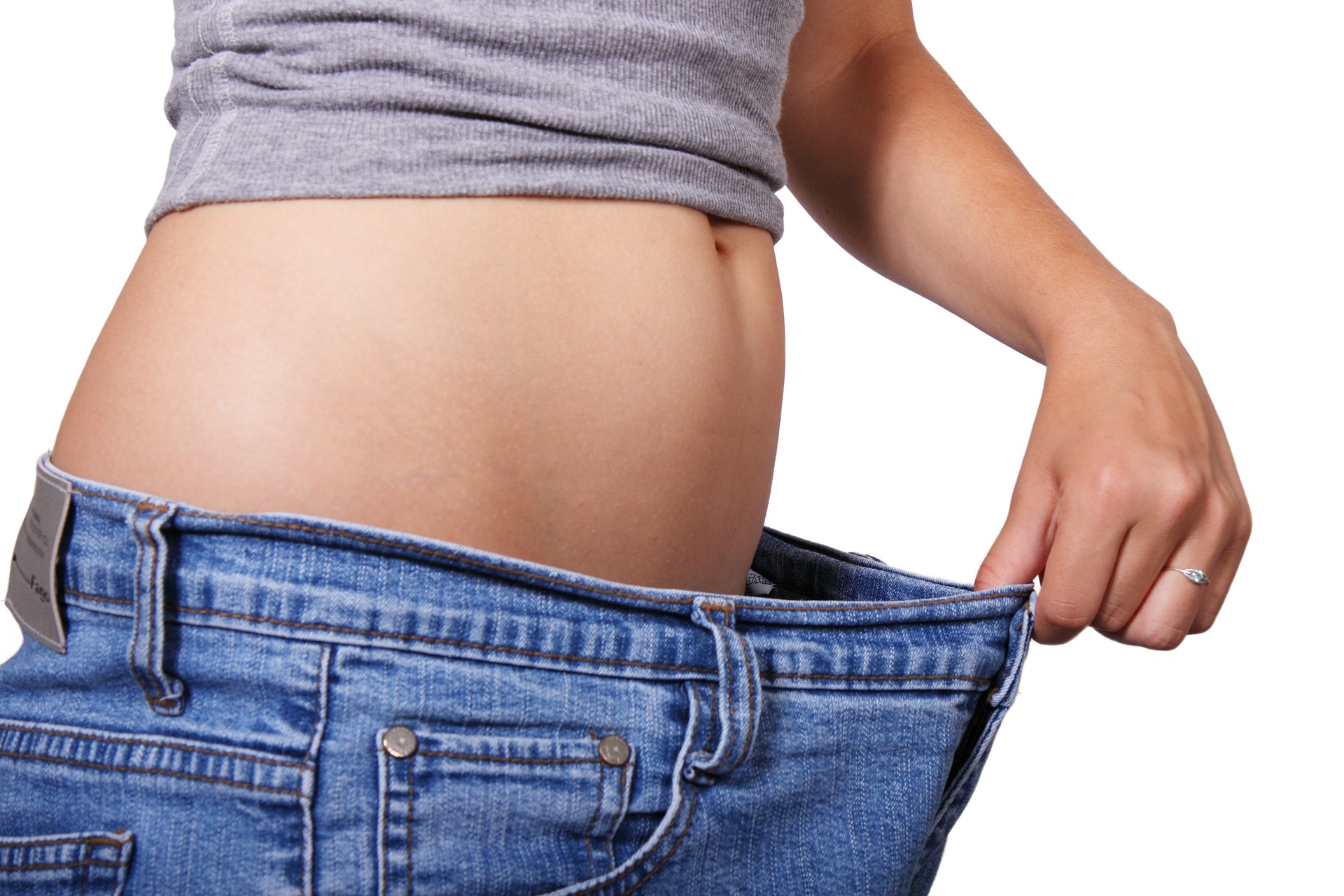
Diets and Deadlines: Female Fat Loss Struggles cont..
In our previous blog post, we discussed three main reasons why many women struggle with fat loss:
– Women are more focused on “weight” loss, rather than fat loss.
– Hormones can play a big role in how fast and where the fat loss can occur.
– Women generally have a lower muscle mass than men do.
While we could have certainly ended the conversation there, (solving any one of those issues could result in a shift in fat loss for most ladies), we feel compelled to bring the topic home by pointing out the elephant in the room: The Diet Mentality. Even if most ladies understand the central theme behind developing a less stressed, “muscle-based” mindset, they still want to go about solving their fat loss issues with extreme diets and unrealistic deadlines.
Diet Preferences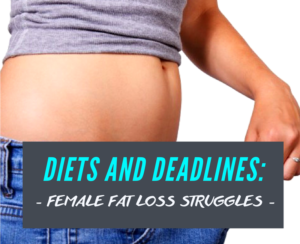
When we choose to diet in a way to lose “weight,” (remember reason #1!) we typically select very extreme methods to do so. (*cough* 1200 calorie diets!)
Whenever you embark on a low calorie diet your body is forced to make less food spread farther, so it often has to make budget cuts to survive (literally). Because muscle requires more calories to maintain, extreme “budget cuts” can put those precious muscles you’re striving so hard to hold on to, in jeopardy. When the body is faced with a low calorie (especially low protein) diet – it has to break down muscles in order to “find” the protein it needs to survive (essentially getting rid of those dang “expensive” muscles, so that the budget can spread further!).
Most women (whether on a diet or not) prefer a high carb, high fat diet with very low protein incorporated. When coupled with little to no resistance training, and repeated bouts of super low calories, many women are living in a perpetual “muscle wasting” lifestyle. Rejecting the 1200 calorie insanity, and increasing the protein is a great starting point for most ladies seeking fat loss. Protein not only keeps you fuller longer, it helps to keep the metabolism from burning up the proteins in our muscles, thus making our workouts more effective, and allows the muscles to build up instead of break down. Once weight lifting is sprinkled in, it’s icing on the cake! (Note: I didn’t say anything about getting rid of cake…)
Patience!!
Because many of the diets that we tried in the past helped us to lose weight “fast,” it’s honestly tough to NOT lack patience. Thanks to our microwave society, we tend to want alllllllll. the. things. RIGHT. NOW. We can’t understand why men can lose weight so quickly, or why younger women are dropping pounds faster than us. The media knows this, and makes sure to taunt/target/tempt us regularly with quick fixes (and we just keep taking the bait- even when we know better). We want things that happen as fast for us as they did in the past – to have the losses we did when we went on our first diet.
We say we’re willing to do “whatever it takes” — but never for “as long as it takes.”
Having patience is about being willing to build/maintain muscle mass and actually stop stressing about it. It means focusing less on weight loss, more on fat loss. It’s about finally settling in and doing things right by your body. It’s about reaching your goals in a no-nonsense way that does not backfire in the long run: eating enough food, eating enough protein, getting enough fiber, lifting and doing workouts in a way that are built to maintain the muscle mass you already have, and maybe even encourage more muscle growth along the way.
So there you have it. The five biggest reasons why women tend to struggle with fat loss. So remember this on your journey to a better and healthier you. Dieting will lead you down a path of never ending gain/lose cycles, constantly frustrated with the lack of progress. The goal of the Diet Mentality is to make you stop enjoying your life to its fullest. A change in your diet focus, throwing the scale away, and taking the time to build your muscle mass back up while living your life now, will all put you down the path to success. The path just winds along the rose gardens, rather than plows right through them.
.
Plugin by Social Author Bio

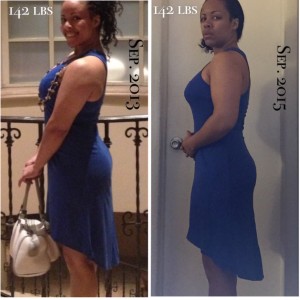
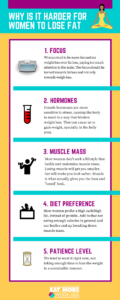
Recent Comments